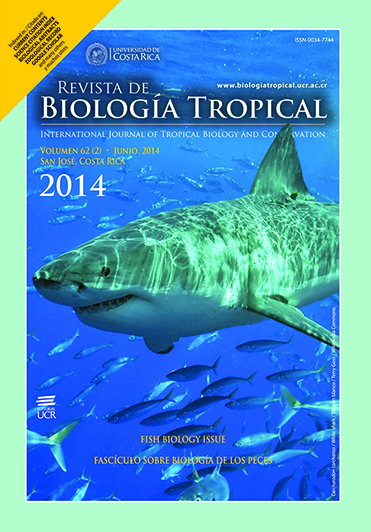Abstract
The trophic ecology of the aquatic insect fauna has been widely studied for the Northern temperate zone. However, the taxa originally classified within a given particular trophic group in temperate ecosystems, do not necessarily exhibit the same dietary profile beyond its geographic limits. Since, the trophic ecology of caddisfly larvae is largely incomplete in the Neotropical Region, the present work aims to describe feeding habits inferred from quantitative analysis of data taxonomically resolved at the species level. For this, the feeding habits of three Trichoptera species Marilia cinerea, M. elongata and M. flexuosa were recorded in the Yungas forests of Argentina and Bolivia. A total of 15 larvae of each species were sampled from 13 different streams were selected for gut content analysis. The ingested material was extracted from the foregut and midgut by using ventral dissection of thorax. For each species, mandibles were dissected, mounted in glycerin and illustrated in order to highlight morphological differences between these mouth pieces purportedly associated to the dietary behavior of individuals, and their habitats. The niche overlap was estimated through Schoener’s method. The diet analysis revealed that M. cinerea, M. elongata and M. flexuosa feed on the same food items, but through different patterns of preferences. Larvae of M. cinerea were collected on both emerging surfaces of rocks on which a thin layer of running water flows and streams sliding areas with stony bottoms attached to the rock surfaces. They displayed a gut content consisting predominantly of invertebrate vestiges and have strong mouthparts provided of large molar areas; this allowed us to allocate the species within the functional group of predators. M. elongata feeds mainly on fine particulate material, its mouthparts are scoop-shaped and occurs in areas of low flow; this set of features is linked to a collector-gatherer strategy. Finally, larvae of M. flexuosa have been primarily assigned to the functional group of shredders and secondarily to the collector-gatherer class. They inhabit sandy bottoms of mountain streams, have strong scoop-shaped mouthparts and show a diet dominated by leaf litter and fine particulate material. We concluded that the functional group assignment to the genus level for Marilia is not recommended, and further studies at species level are necessary.
##plugins.facebook.comentarios##

This work is licensed under a Creative Commons Attribution 4.0 International License.
Copyright (c) 2014 Revista de Biología Tropical


